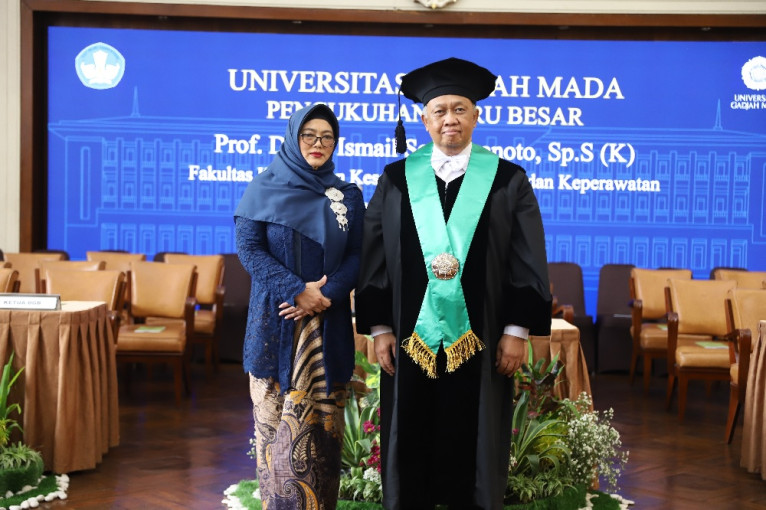
Stroke stands as a global behemoth, claiming lives with relentless precision and contributing significantly to mortality rates in Indonesia.
“Swift action is paramount to unlock the full potential of interventions in stroke,” emphasized Professor Ismail Setyopranoto during his inaugural discourse titled “The Use of Neuroprotectors in the Clinic: Challenges and Opportunities in the Management of Acute Ischemic Stroke” at the UGM Senate Hall on Tuesday (Dec. 5).
His induction as a professor in neurology at the UGM Faculty of Medicine, Public Health, and Nursing marked a milestone in the pursuit of combating this formidable medical adversary.
Professor Setyopranoto delved into the history, highlighting a pivotal moment eight years ago when the National Institute of Neurological Disorders and Stroke (NINDS) ushered in intravenous thrombolysis with recombinant Tissue Plasminogen Activator (rTPA) as the pioneering medical therapy for acute ischemic stroke.
Despite promising trial results, the quest for effective therapies that elevate functional outcomes persists. Ongoing clinical trials are exploring alternative strategies to diminish infarct volume and amplify clinical success. Yet, the preclinical optimism has yet to translate consistently into improved clinical outcomes.
The Head of the UGM Department of Neurology underscored that, despite the plethora of studies on stroke therapy, treatment outcomes have seen limited enhancement.
In neurology, the guiding principle is encapsulated in the mantra “Time is Brain,” acknowledging that an estimated 1.9 million neurons succumb every minute to ischemia during a stroke. Hence, the imperative lies in delivering timely and fitting therapies.
Professor Setyopranoto spotlighted the formidable challenge posed by the heterogeneity of strokes, acknowledging the unique impact of stroke heterogeneity on each survivor, encompassing factors like etiology, comorbidities, and lifestyle.
It is imperative to devise methodologies that facilitate the identification of a comprehensive clinical phenotype.
The Chair of the Competency Test Commission at the Neurology Collegium brought attention to reperfusion therapy, suggesting that a combination of intravenous thrombolysis and endovascular therapy, coupled with oxidative and nitrosative stress inhibitors, could emerge as a promising strategy in the (hyper)acute phase.
This approach may bring about heightened inflammation and neuronal tissue recovery resolution in the late acute and chronic phases, as evidenced by positive outcomes in animal models and limited clinical trials.
In the past two decades, strides in neuroprotective therapy for acute ischemic stroke have been rapid. Initial successes in preclinical research have propelled numerous neuroprotective drugs into clinical trials.
The dawn of precision medicine now beckons, presenting an opportune juncture to revolutionize stroke treatment.
Precision medicine, enriched by biomarkers, promises accurate patient phenotype identification, continual disease progression monitoring, therapy response assessment, and novel neuroprotective drugs.
Author: Ika
Photographer: Paris

